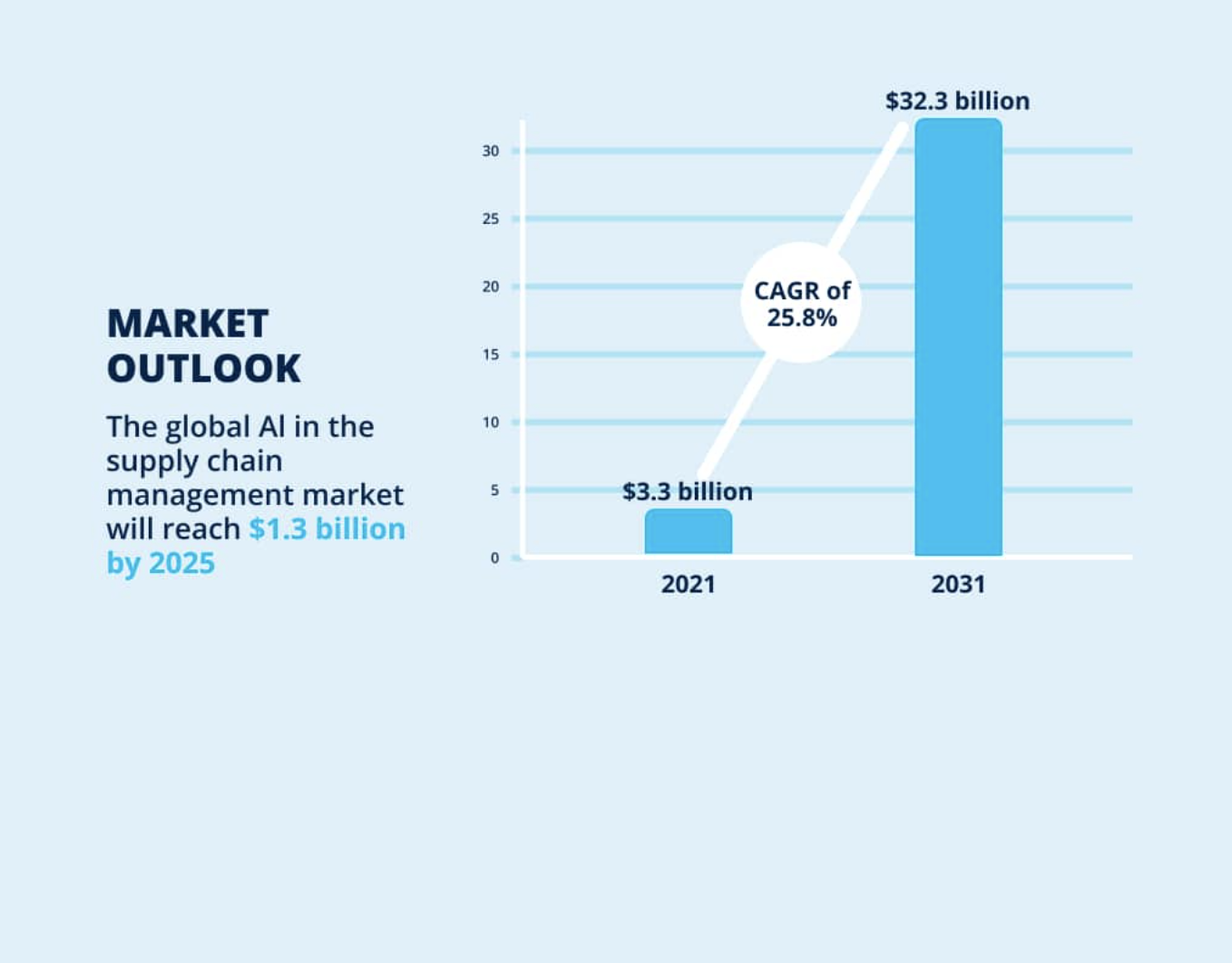 In this second article of a 3-part series, Marijn Overvest, founder of Netherlands-based company, Procurement Tactics, continues to unpack a wealth of advice for industry professionals to use in their planning for 2024. We pick up at Number 4 of 11 trends in procurement, predicted by experts for the coming year.
In this second article of a 3-part series, Marijn Overvest, founder of Netherlands-based company, Procurement Tactics, continues to unpack a wealth of advice for industry professionals to use in their planning for 2024. We pick up at Number 4 of 11 trends in procurement, predicted by experts for the coming year.
Trend 4. Procurement forecasting with predictive analysis
Adding predictive analytics to the procurement processes is not just a good idea, it’s very important. Thanks to new technological improvements, businesses can easily use predictive analytics by 2024. Predictions say the global procurement analytics market will reach $32.3 billion by 2031. Technology, new electronic ideas and strong computer systems are making data-driven solutions more wanted. That’s why predictive analytics will keep growing, especially in 2024.
Sievo is a company that assists data-driven businesses in making informed decisions. It aids companies in extracting, classifying and enhancing data from various ERP systems and external sources. Sievo is a well-known name in this field, helping numerous companies worldwide achieve their objectives.
Impact: More businesses to adopt predictive analytics
Predictive analysis helps procurement experts obtain useful information to help them make data-driven and informed decisions. Procurement teams are more able to forecast demands that will help in gaining more profit and reduce the risks in their purchasing decisions. To thrive in this evolving procurement landscape, procurement must wholeheartedly embrace predictive analytics and make data-driven forecasting the cornerstone of their procurement strategies and supplier relationship tooling.
Action: Making the most out of predictive analytics
To gain the full potential of predictive analytics in procurement, procurement teams must take decisive action. The journey of integrating predictive analytics begins by starting to integrate predictive analytics tools into their procurement software portfolio.
Procurement teams can leverage predictive analysis to optimise their procurement process and make more informed decisions. You may be wondering how this is possible. Well, predictive analysis can help procurement teams navigate market fluctuations by identifying the best time to procure materials and the most suitable suppliers to do business with. By leveraging existing and historical data, procurement teams can streamline their procurement process and make more effective decisions.
When using procurement analytics, it’s important to be aware of the potential for data breaches and unauthorised access due to the tool’s reliance on data. Moreover, we cannot deny that predictive analysis will be an important part of the procurement process in 2024 as it can help procurement teams anticipate potential risks and opportunities, and make better decisions.

Trend 5. Real-time stock & supply systems
Another technological feature that we are eyeing to gain attention in 2024 is real-time systems. Recent years have taught a hard lesson that any supply risk or disruption in procurement should be identified immediately. Similarly, if there’s a demand surge, suppliers must be informed promptly. Many companies couldn’t respond to the pandemic due to information delays and time lags.
In 2024, companies will focus on improving collaboration in their supply networks and implementing more real-time systems and processes to reduce information delays to zero.
Impact: Changing the way procurement professionals monitor their products.
Integrating real-time systems in procurement reduces information time lags to near zero, providing accurate and up-to-date information on supplies and products.
Managing sourcing and procurement with outdated supply chain management infrastructure, which keeps your data locked and having to manually update spreadsheets, can leave you lagging in real-time changes that constantly occur in the business world.
In today’s fast-paced environment, you need to have a comprehensive, transparent view of your company’s sourcing and spending data that is accessible to all teams in real-time.
To tackle the complexities of the supply chain ecosystem, you need robust cloud-based sourcing and procurement technology that can help your organisation enhance data transparency, reduce spending, mitigate risk, and improve collaboration with suppliers.
Additionally, real-time system integration can be upgraded further by backing it up with AI tools and by having an agile cloud-based platform.
For instance, Cirque du Soleil, a Montreal-based company, relies on 1 900 suppliers from all over the world to deliver complex performances that require custom-made equipment and thousands of costumes. After adopting an agile cloud-based platform that facilitates transparent procurement, Cirque managed to significantly enhance its supply chain management.
Action: More investment in real-time systems
Many companies are still sceptical regarding the complete and overall digitisation of their procurement process. However, what these companies don’t realise is that it can improve their product quality, shorten cycle time and increase their brand image.
For companies to start with their real-time system initiatives, they must start implementing real-time transportation visibility platforms.
These visibility platforms will address the problem of customers having no view of the status of their products. By doing this, companies can gradually adopt the system and have a real-time overview of the procurement process and product status.
Trend 6. Redefining remote procurement work setup
Now that the pandemic is over, there is still a question that lingers, namely, “Will remote procurement work continue to exist?” The answer is yes – remote work setup is here to stay. But what should companies do to make sure team members achieve the best results while working remotely?
Impact for Procurement: Online negotiation skills
The evolving landscape of remote work carries substantial implications, especially in procurement, including those that outsource their operations. This shift underscores the need for adaptability within organisations, allowing professionals to work in diverse and flexible ways. While some companies advocate for a strict return to the office, the prevailing sentiment leans toward the acceptance of remote work as a possible option.
Interestingly, according to a report by Gartner, a number of workers express a preference for a hybrid work model that combines both office and remote work. Some even suggest they may consider leaving their jobs if forced to return to the office full-time, highlighting the strong demand within the procurement sector for the flexibility to work from home. This stresses the need for procurement to carefully balance the benefits of remote work with the importance of collaborative environments to boost innovation and efficiency.
Action: Procurement professionals must step up their role
In 2024, the way procurement professionals work will keep changing. Procurement teams must establish clear guidelines on how, where and when work should be conducted. When do I visit suppliers? When do I negotiate online, and when offline? When do I mail, when do I call, and how do I achieve the best results while making sure the relationship with suppliers is at the best?
When negotiating online, should I adapt my negotiation style? The short answer to that question? Yes!
Covid-19 has influenced the way we close deals. The standard yet outdated rule suggests procurement managers are more likely to maximise their opportunities in face-to-face negotiations. Forget it. For most procurement professionals – face-to-face negotiations are the preferred mode of negotiating but since this is not the standard, it is very important to know which tactics to use while negotiating via phone, Zoom, MS teams, or any other digital way.
Trend 7. Procurement’s Emphasis on Relationship Building
Good relationship management with suppliers is important for any company, and thus for procurement teams. If the last few years of shortage of raw materials taught companies one important lesson, it is that they need to have good relationships with their suppliers. Many companies without competent relationship management found themself with no delivered products.
In 2024, a drastic shift will be underway in how businesses collaborate with their suppliers, co-manufacturers, customers, carriers and distributors. They’ve realised that their traditional, self-centred approaches are no longer efficient, especially after struggling with the challenges posed by the pandemic. As a result, they’re placing a high priority on implementing systems that enable real-time collaboration with their partners.
Impact: Quick Communication
The lessons learned from the pandemic have highlighted the critical importance of agility and responsiveness within procurement.
Businesses have come to recognise the need to forge real-time collaborations with their partners, with an amplified focus on key areas such as relationship building, planning, forecasting, orders, shipments, delivery schedules and inventory tracking. This real-time collaboration serves as a powerful tool for minimising errors and inefficiencies, ultimately leading to cost savings and bolstering competitiveness within their intricate business networks.
A valuable insight learned from the pandemic is the importance of quickly identifying supply risks and disruptions. In 2024, businesses will make it a top priority to enhance collaboration within their supply networks, leveraging real-time systems to ensure the rapid communication of demands.
Action: Strengthening collaboration
In procurement, businesses are increasingly recognising the critical importance of strengthening their relationships with suppliers.
To do this, procurement teams must make investments in real-time collaboration platforms, ensuring that all their suppliers have access to the most up-to-date information.
To improve your relationship with your suppliers, it is important to have a comprehensive understanding of their capabilities, plans, and how well their objectives align with your business needs. As your suppliers’ success and stability directly affect your operations, it is crucial to go beyond the surface level and establish a genuine connection with them.
While it may prove difficult to build a relationship with a supplier, it is essential to do so, especially if a supplier is important to your business and presents potential risks in terms of supply assurance. To create a strong supplier relationship, you need to move beyond the standard interactions with account managers.
This means asking the right questions and actively seeking information that may not be readily shared. By delving deeper and establishing trust, you can build a more robust and stable relationship with your suppliers.
Additionally, you must conduct supplier audits. By doing so, you gain valuable insights into the supplier’s overall quality performance. It allows you to assess their ability to consistently meet your quality requirements and identify any potential issues or areas of non-compliance. This proactive approach enables you to take corrective actions and address any concerns before they impact your operations or the end product.
Lastly, you should develop a culture of risk awareness. It is similar to constructing a formidable defence system for your supplier relationships. Encouraging individuals to actively identify and address potential risks before they become significant issues helps create a risk-aware culture. By fostering an environment where everyone is empowered to stay vigilant, we can identify warning signs early on and take proactive measures to prevent any negative impact on our business.
Theme 3: Procurement as a force for good
Procurement is stepping up to lead transformation changes that will benefit both businesses and employees.
Due to changed legislation and more and more companies focussing on environmental, social and governance (ESG) goals, many procurement professionals will emphasise sustainability in 2024.
Additionally, the procurement landscape will continue to adopt inclusivity and diversity within its operations, seeing a lot of diverse groups working together to streamline the procurement process.
The rise of T-shaped Procurement teams and individuals will also be popular in 2024, as flexibility will be one of the key factors in tackling the challenges that procurement teams face to become more future-proof.
Read on in next month’s SmartProcurementNews about the final four trends in procurement which you need to know about ahead of the new year.



























